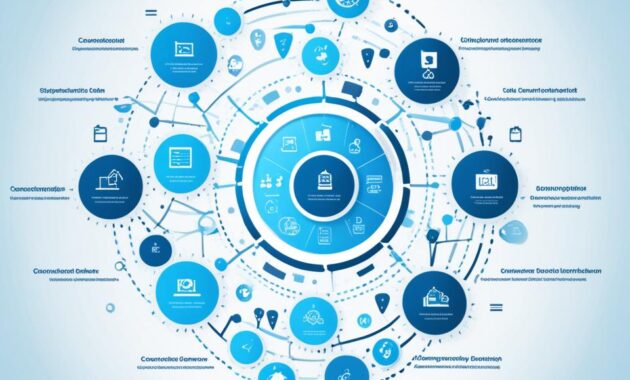In today’s fast-paced business landscape, companies are constantly seeking innovative ways to optimize their operations and drive efficiency. The enterprise resource system (ERS) is a powerful software solution that offers a comprehensive answer to this challenge. By integrating and managing a company’s core business processes, including finance, human resources, supply chain, and more, an ERS can help organizations streamline their workflows, improve decision-making, and enhance overall operational efficiency.
Key Takeaways
- An enterprise resource system (ERS) is a comprehensive software solution that integrates and manages a company’s core business processes.
- ERS enables data centralization, workflow automation, and improved decision-making to drive operational efficiency.
- By implementing an ERS, businesses can benefit from enhanced visibility, streamlined operations, and increased productivity.
- ERS helps organizations to adapt to changing market demands and remain competitive in their respective industries.
- Selecting the right ERS solution is crucial to ensure it aligns with the company’s specific needs and goals.
What is an Enterprise Resource System?
An enterprise resource system (ERS) is a powerful software platform that unifies a company’s essential business functions into a single, integrated system. This comprehensive solution enables seamless data flow and communication across different departments, empowering organizations to optimize their operational efficiency.
Integrated Business Management Solution
At its core, an ERS is designed to streamline and automate a wide range of business processes, from finance and accounting to supply chain management and human resources. By integrating these critical functions into a centralized system, organizations can enjoy improved decision-making, reduced errors, and enhanced overall productivity.
Streamlining Operational Processes
One of the key benefits of an enterprise resource system is its ability to streamline and automate operational processes. Through the use of advanced process automation technologies, an ERS can help businesses eliminate manual, time-consuming tasks, freeing up employees to focus on more strategic and value-added activities. This, in turn, can lead to significant improvements in operational efficiency and integrated business management.

By implementing an enterprise resource system, organizations can unlock a range of benefits, including enhanced visibility into their operations, improved decision-making, and ultimately, a stronger competitive edge in the marketplace. As a comprehensive integrated business management solution, an ERS is a powerful tool for driving long-term growth and success.
Key Features of an Enterprise Resource System
Robust enterprise resource systems often include a range of features designed to facilitate data-driven decision-making and streamlined operations. From data integration and centralization to supply chain management, these comprehensive solutions empower organizations to optimize their operations and enhance overall efficiency.
Data Integration and Centralization
One of the key capabilities of enterprise resource systems is the ability to integrate and centralize data across various business functions, such as finance, human resource management, and supply chain management. This integrated approach allows companies to access real-time information, enabling them to make informed decisions and drive operational improvements.
Supply Chain Management
Enterprise resource systems often include robust supply chain management tools, allowing organizations to streamline their logistics, inventory management, and overall supply chain processes. By integrating data from various supply chain touchpoints, these systems provide visibility and control, helping businesses optimize their supply chain operations and enhance their responsiveness to market demands.
The combination of data integration, centralization, and supply chain management capabilities within an enterprise resource system empowers organizations to achieve greater financial, operational, and strategic alignment, ultimately driving business success.
Benefits of Implementing an Enterprise Resource System
Implementing an enterprise resource system can offer a range of advantages for businesses. By automating and streamlining core business processes, an ERS can help organizations reduce errors, increase productivity, and free up resources to focus on strategic initiatives. The centralized data and integrated workflow of an ERS can lead to improved data integration and decision-making, as well as enhanced supply chain optimization, financial management, and human resource management.
One of the key benefits of an ERS is business process automation. By automating repetitive tasks and workflows, organizations can improve operational efficiency and reduce the likelihood of human errors. This, in turn, can lead to cost savings and increased productivity across the organization.
Moreover, the data integration capabilities of an ERS can provide businesses with a holistic view of their operations, enabling more informed decision-making. With all critical data centralized in a single platform, organizations can better identify opportunities for improvement, streamline processes, and optimize their supply chain and financial management.
Finally, an ERS can also enhance an organization’s human resource management by streamlining processes such as payroll, employee onboarding, and performance tracking. This can lead to improved employee satisfaction, reduced administrative burden, and more efficient workforce management.

